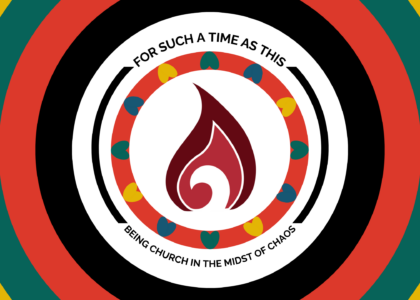By Jakob Topper
When my spouse and I married, I knew we’d outgrown the evangelical cage of our upbringing, but we hadn’t yet found a new spiritual home. Believing that premarital counseling was important and knowing nowhere else to turn, we asked a local conservative Baptist minister to counsel with us prior to the wedding.
Immediately, he tasked us to complete a personality survey intended to indicate whether or not we were compatible across several “biblical” categories. The assessment was unnecessarily gendered. I suppose it was so that he could also learn if I was a strong man and my wife a submissive spouse.
When the results came back, it was eye opening for all of us. Across nearly every category I scored higher in the traditionally feminine characteristics while my wife scored higher in the masculine characteristics.
Intuitively I already knew this was true, but it was helpful seeing it on paper whether or not that was our counsel’s intent.
That’s been a consistent pattern throughout my life. I’m emotional and empathetic. I cry when I’m sad. When our children get hurt, they run to me for comfort. I have plenty of toxically-masculine characteristics mixed in, even spending the majority of my college years cage fighting, but I’ve still always been feminine enough to make my dad and cousins uncomfortable.
That’s one reason I am loving the narrative lectionary and preaching through the Gospel of John this year. With Karoline Lewis’s stellar commentary to guide me, I’m finding the feminine characteristics of God the father and Jesus a great encouragement.
One of my favorite lessons came from John 1. Lewis points out that in verse 18, most Bible translations say, “God the only son is at the father’s side” or “near the father’s heart.” Both are bad translations. There are words that mean side and heart, but John uses the word that means bosom or breast.
An accurate translation would read, “God the only begotten who is at the father’s breast.” It’s an image of God the father breastfeeding the son, and before 1750, that’s what most Bibles said.
Karoline Lewis writes:
“Margaret Miles, in her study of the breast as a religious symbol in art (A Complex Delight: The Secularization of the Breast, 1350–1750), argues that before 1750 a primary image for salvation was the infant Jesus nursing at the exposed breast of Mary. The believer, in viewing this picture, was invited to imagine being in Jesus’ position and, in this way, experience the salvific act of God as nurturer. The year 1750, however, marks two critical events in the history of humanity that forever altered this image as a possible depiction of God’s love for God’s people. These two events include the advent of medical anatomy and pornography. When the female body moves from being a source of nourishment and life to becoming a detached object of study and desire, there is no longer the possibility of visualizing God in this way, and viewing the breast as a religious symbol becomes impossible…Translations of John 1:18 published after 1750 represent this remarkable shift in the perception of the female body.”[1]
John doubles down on this fabulous feminine imagery in chapter 13 when John tells the story of the disciple whom Jesus loved who was resting at Jesus’ side after the meal. Except once again, it isn’t the word for side, but the word for bosom or breast. These are the only two places the word is used in the Gospel of John.
To describe the relationship between Jesus and God has little meaning, Lewis says, if the believer cannot imagine that same relationship with God and Jesus themselves.
The language gets tricky and fun, but John seems to be saying that God the father is a good mother who nurtures and gives all that her children need for life just as a breastfeeding mother provides all that her child needs for life. The believer is invited into this same relationship with God and Jesus, and by the end of the story the believer is invited to replicate this relationship with the world. Nurturing and providing sustenance and care to all of the world’s hurting.
I find Lewis’s interpretation to be life-giving and affirming.
Richard Rohr says that we all have traditionally masculine and feminine energies within us. Toxic masculinity and a great many other maladies are the result of our inability or our unwillingness to find a balance with these energies.
Seeing them represented within Godself encourages me to nurture them within myself.
[1] Lewis, Karoline M. John (Fortress Biblical Preaching Commentaries) (p. 22). Fortress Press. Kindle Edition.

Jakob Topper is senior pastor at North Haven Church in Norman, Oklahoma. A native of the Texas Panhandle, he is a graduate of Logsdon School of Theology at Hardin-Simmons University.




This is an amazing article…. As I have learned more from it in just the time of reading it as I have of many years of being raised in church as a preacher’s kid, then minister’s wife and mother of a minister. Thank you for writing this and sharing it with us.